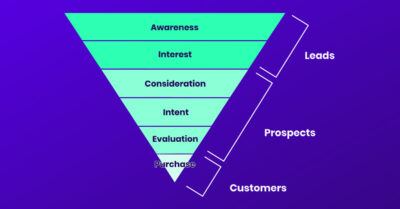If you’re an online retailer, embracing international ecommerce and expanding your business to the global market can be a great way to increase your sales and grow your brand. With the rise of international ecommerce, it’s easier than ever to reach customers all over the world. However, selling internationally also comes with its own unique set of challenges, such as navigating different languages, currencies, and customs regulations.

To succeed in international ecommerce, you need to have a solid strategy in place. This includes understanding the needs and preferences of your target audience in different countries, localizing your website and marketing materials, setting up international shipping and payment options, and complying with local laws and regulations. By doing your research and taking the time to tailor your approach to each market, you can create a seamless and enjoyable shopping experience for your customers, no matter where they are in the world.
Whether you’re just starting out in international ecommerce or looking to take your existing business to the next level, there are plenty of resources and tools available to help you succeed. From market research and localization services to shipping and payment platforms, there are many ways to streamline your operations and make the most of the global online shopping market.
Understanding International Ecommerce
Expanding your business internationally can be a great way to increase your customer base and revenue. However, it is important to understand the unique challenges and opportunities that come with international ecommerce.
Market Research and Global Trends
Before entering a new market, it is essential to conduct market research to understand the local demand, competition, and cultural differences. This will help you tailor your products, marketing strategies, and website to meet the needs and preferences of your target audience. You can use various tools and resources to conduct market research, such as online surveys, focus groups, social media analytics, and competitor analysis.

In addition to market research, it is important to stay up-to-date with global trends and changes in consumer behavior. For example, the COVID-19 pandemic has accelerated the shift towards online shopping and contactless payments, which has created new opportunities and challenges for ecommerce businesses. By staying informed and adaptable, you can position your business for success in the global market.
Barriers and Economic Downturns
Entering the global market also comes with various barriers and risks, such as language barriers, legal regulations, shipping logistics, and cultural differences. It is important to research and address these barriers before entering a new market to minimize potential risks and costs.
Furthermore, economic downturns and global crises can also impact international ecommerce. For example, the 2008 financial crisis led to a decrease in global trade and consumer spending, which affected many ecommerce businesses. Similarly, the COVID-19 pandemic has disrupted global supply chains, increased shipping costs, and reduced consumer confidence and spending. To mitigate these risks, it is important to have a flexible business model, diversified revenue streams, and contingency plans in place.
In summary, expanding your international ecommerce business can be a rewarding and profitable endeavor, but it requires careful planning, research, and adaptability. By understanding the global market, competition, and trends, as well as addressing barriers and risks, you can position your business for success in the global market.
Building an International Ecommerce Strategy
Expanding your ecommerce business internationally can be a great way to increase your customer base and revenue. However, it requires a well-planned strategy that takes into account the unique challenges of operating in different countries. In this section, we will explore some key considerations for building a successful international ecommerce strategy.

1. Localization and Customer Experience
One of the most important aspects of building an international ecommerce strategy is localization. This involves adapting your website and marketing materials to the local language and culture of your target market by translating your website, product descriptions, and marketing materials into the local language. You should also consider localizing your website design and user experience to meet the expectations of your target market.
Another important aspect of localization is providing local customer support. This includes offering customer service in the local language and providing local contact information. This will help build trust with your customers and improve their overall experience with your brand.
2. Payment Methods and Currency Considerations
Payment methods and currency is also a key consideration for international ecommerce. Different countries have different preferred payment methods and currencies. It’s important to offer a variety of options to meet the needs of your customers. This may include accepting local payment methods such as Alipay in China or iDEAL in the Netherlands.
It’s also vital to consider currency exchange rates and fees when pricing your products. You may want to consider offering local currency pricing to make it easier for customers to understand the cost of your products.
3. Marketing Strategy and Customer Acquisition
Building an international ecommerce business requires a marketing strategy. You will need to develop a marketing strategy that is tailored to the local market. This may include using local social media platforms, search engines, and advertising channels.

It’s also important to consider search engine optimization (SEO) when building your international ecommerce strategy. This involves optimizing your website and content to rank higher in local search engines. This may include using local keywords, creating local content, and building local backlinks.
In addition to SEO, you may also want to consider local customer acquisition strategies such as partnering with local influencers or offering promotions for local holidays.
By taking into account these key considerations, you can build a successful international ecommerce strategy that meets the needs of your target market and drives revenue for your business.
Logistics and Fulfillment
When it comes to international ecommerce, logistics and fulfillment are two crucial aspects for your business. In this section, we will discuss the different shipping options and customs, as well as handling returns and refunds.
4. Shipping Options and Customs
When shipping internationally, customs regulations of the destination country are critical. You’ll need to fill out customs forms and pay any applicable taxes and duties. It’s also important to choose a shipping option that meets your needs and budget. Some options include:
- International Express: This is the fastest shipping option, but it’s also the most expensive. It’s best for urgent shipments or high-value items.
- International Standard: This is a more affordable option, but it takes longer to arrive. It’s best for items that are not time-sensitive.
- International Economy: This is the most affordable option, but it can take several weeks to arrive. It’s best for low-value items.

It’s important to research the shipping options and customs regulations of your destination country to ensure a smooth delivery process.
5. Handling Returns and Refunds
Handling returns and refunds can be a complex process, especially when dealing with international customers. It’s important to have a clear policy in place that outlines the process for returning items and receiving refunds.
Some tips for handling returns and refunds include:
- Have a clear and concise return policy: Make sure your customers know what to expect when returning items. This includes the timeframe for returns, the condition of the item, and who pays for return shipping.
- Provide excellent customer service: Respond promptly to customer inquiries and be transparent about the return process.
- Consider offering free returns: Offering free returns can increase customer satisfaction and loyalty.
- Keep track of returns: Make sure to keep track of all returned items and issue refunds promptly.
By following these tips, you can ensure a smooth returns and refunds process for your international customers.
Technology and Platform Solutions
6. Choosing Ecommerce Platforms
When it comes to international ecommerce, choosing the right platform is crucial. Some of the most popular ecommerce platforms include Shopify, BigCommerce, and Squarespace. Each of these platforms has its own strengths and weaknesses. Hence, you should do your research and choose the one that best fits your business needs.
Shopify is a popular choice for small businesses due to its ease of use and affordable pricing. BigCommerce, on the other hand, is more suited for larger businesses that require advanced features and scalability. Squarespace is a great option for businesses that want to create a visually stunning website with minimal effort.

7. Leveraging Analytics and Insights
To succeed in international ecommerce, leveraging analytics and insights to make informed decisions is fundamental. Analytics can help you understand your customers’ behavior, preferences, and needs. This information can be used to optimize your website, marketing campaigns, and product offerings.
One way to leverage analytics is by using an order management system (OMS). An OMS can help you track orders, inventory, and shipments across multiple channels and countries. This can help you streamline your operations and improve your customer experience.
Another way to leverage analytics is by using tools such as Google Analytics or Adobe Analytics. These tools can help you track website traffic, conversion rates, and other key metrics. You can use this information to optimize your website and marketing campaigns for maximum impact.
Choosing the right ecommerce platform and leveraging analytics and insights are critical to success in international ecommerce. By doing your research and using the right tools, you can create a seamless and profitable international ecommerce operation.
Legal and Regulatory Compliance
Since you are operating across borders as an international ecommerce business, legal and regulatory compliance is crucial to ensure that your business is operating within the law and avoiding any potential legal issues.

8. Taxes, Duties, and Tariffs
One of the main considerations for international ecommerce is taxes, duties, and tariffs. When you sell products internationally, you may be subject to different tax laws and regulations, which can vary depending on the country or region you are selling to. It’s important to understand the tax laws and regulations in each country you are selling to, as well as any tax treaties or agreements between your home country and the countries you are selling to.
In addition to taxes, you may also be subject to duties and tariffs when selling products internationally. Duties and tariffs are fees that are charged on imported goods, and can vary depending on the type of product and the country or region you are selling to. It’s important to understand the duties and tariffs that apply to your products, as well as any exemptions or special rules that may apply.
9. Understanding International Trade Laws
Selling products internationally requires an understanding of the international trade laws that apply to your business. International trade laws are designed to regulate the flow of goods and services between countries, and can cover a wide range of issues, including intellectual property, product safety, and environmental regulations.
One of the main international trade laws that you need to be aware of is the World Trade Organization (WTO) agreements. The WTO agreements cover a wide range of issues related to international trade, including tariffs, non-tariff barriers, and trade in services. It’s important to understand the WTO agreements and how they apply to your business, as well as any other international trade laws that may apply.

In addition to international trade laws, you may also need to comply with customs regulations when selling products internationally. Customs regulations cover issues such as product labeling, packaging, and documentation, and can vary depending on the country or region you are selling to. It’s important to understand the customs regulations that apply to your products, as well as any exemptions or special rules that may apply.
Overall, success in international ecommerce requires in-depth knowledge of the various dynamics of the markets you plan to venture into. You will need to understand diverse elements ranging from customer experience to the logistics involved and international trade laws. Having such variables figured out will give you a competitive advantage.


